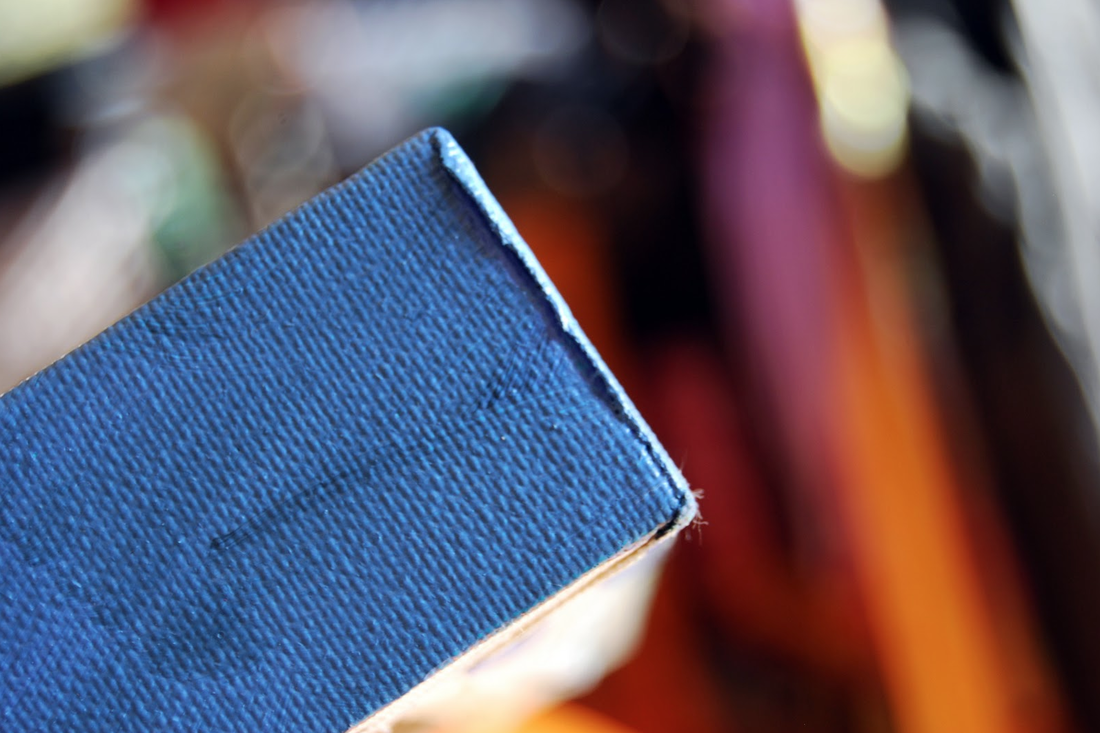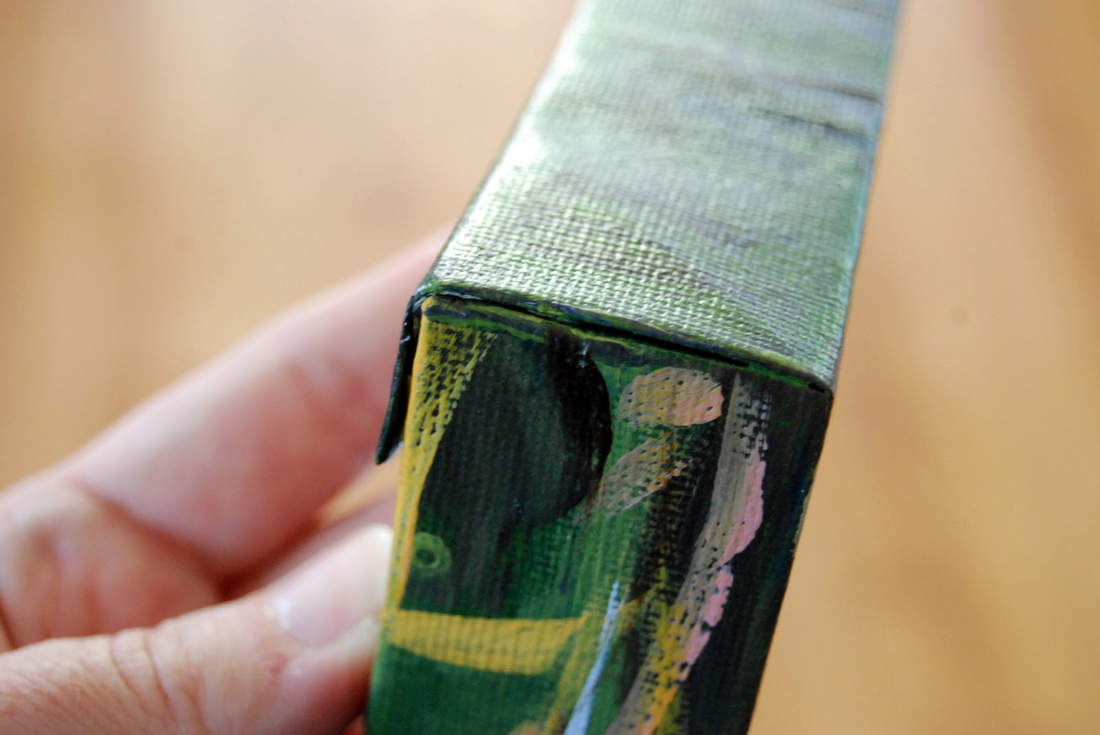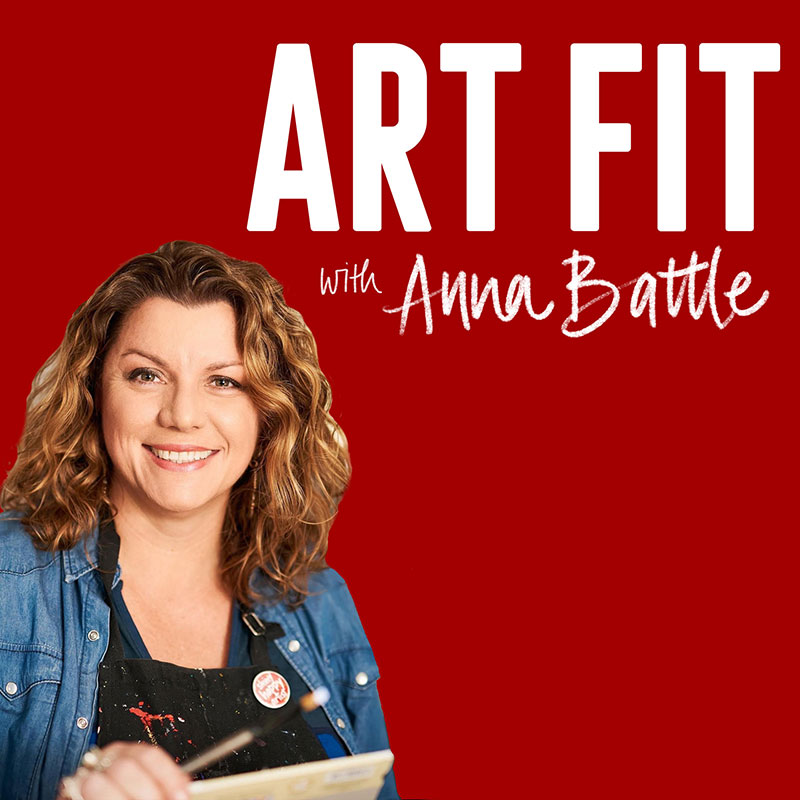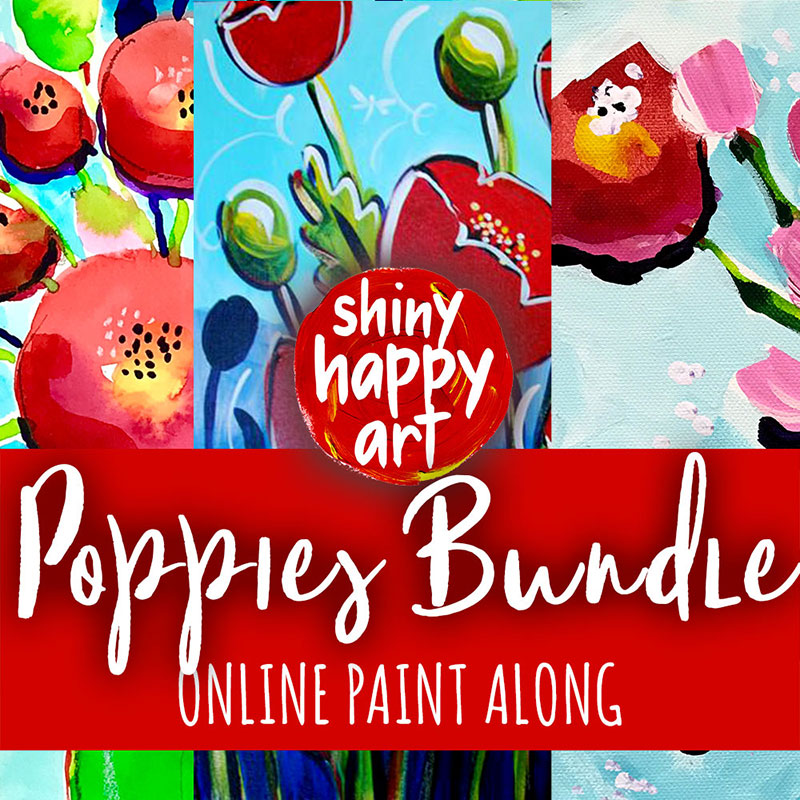At the moment, wrapped, clean edge canvases are my surface of choice. Sometimes they’re called ‘gallery wrapped’, which basically means the staples are not on the edge, they’re on the back. These canvases have been a good thing for artists, as the cost of framing can be crippling when you’ve got a lot of work in stock. Buyers can hang the work as is, or frame the work to their liking.
With any canvas, whether you go cheap, or buy quality, always check out how the corners are made.
You don’t want ‘cut corners’ like this –
… because if you do ever need to remove the painting from the frame, you’ll have difficulty restretching it. Many of the cheap brands have these cut corners.
Much better to go with a ‘folded edge’ canvas construction –
The good brands do this, and if you paint your masterpiece, you know you’ll be able to reframe it later if needed. And if you’re the buyer, a folded edge is one indication of a better quality product.
I used to use the cheap ones, and sometimes I still do, but only for ‘non heirloom art’ – if it’s to be used in a growing child’s room or hung on the wall for a season or two. I can tell you that the canvas is thin, very likely to tear (if it isn’t already torn by the time you get it home) and over time the frames may warp or swell. It’s also harder to paint well on poor quality canvas.
I now usually paint on Winsor and Newton brand (or similar) canvases, as I trust the quality of the timber stretchers and construction, the strength and weight of the canvas itself, and the quality of the pre-priming paint used. They are more expensive, but I’m at a stage with my art where I simply have to make the investment. I dream of having canvases made just for me, with lovely deep sides and thick linen fabric. That time will come!
Whichever you decide to paint on or buy, inspect it thoroughly and don’t pay big bucks for a canvas that’s not going to last.





